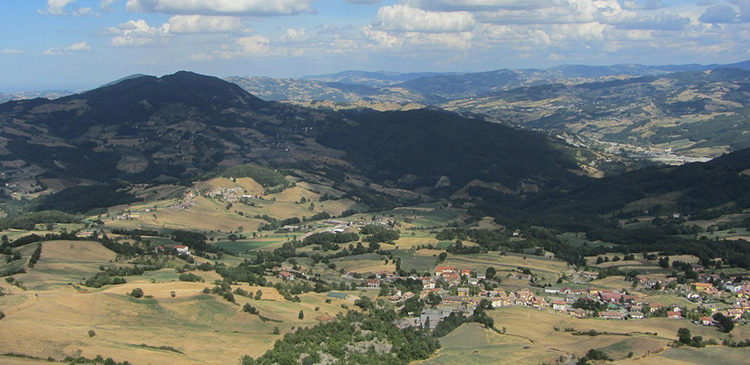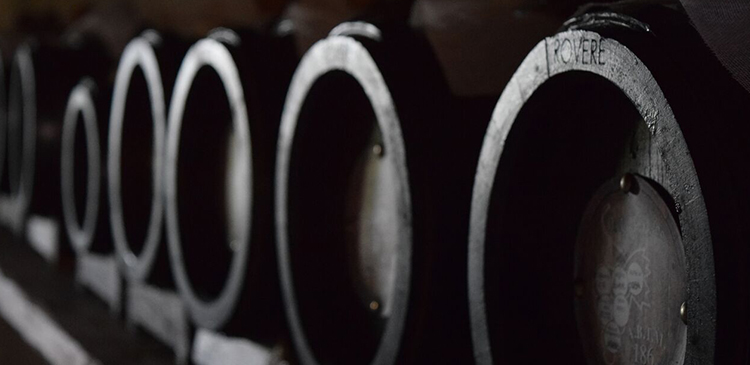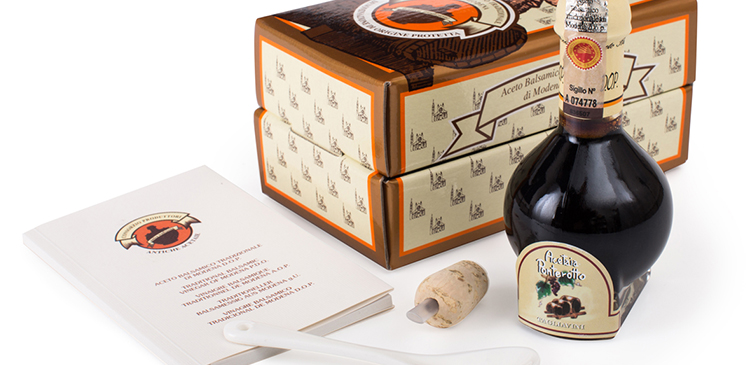This article explains the history of balsamic vinegar, taking you from 11th century Emilia-Romagna in Italy through to modern day authentic balsamic vinegar and how it differs from the mass-produced counterparts. Below we’ve described:
Do you want to ensure your cupboard is graced with a truly authentic, Italian Balsamic Vinegar? You can view our full range of Aged and Infused Balsamic Vinegars by viewing our products here:

Introduction to The History Of Balsamic Vinegar
Ten to fifteen years ago, balsamic vinegar was relatively unknown outside of Italy. Now due to the backing of celebrity chefs, exposure in gourmet food magazines and countless appearances on television cooking programmes there is hardly a household in the land without a bottle in the kitchen cupboard.
However, most of the bottles have been bought from a supermarket and consequently, most people have still yet to taste truly authentic balsamic vinegar, or “Aceto Balsamico Tradizionale” as it is known in Italian. For hundreds of years wealthy families in the small towns of Modena and Reggio just west of Bologna in the northern Italian region of Emilia-Romagna had been making balsamic vinegar for their own consumption.

The beautiful region of Emilia-Romagna
Families would nurture their supplies over the years, passing it on from generation to generation, gifting small amounts to esteemed friends and honoured guests and perhaps even bequeathing some to a daughter as part of her dowry.
Why is it called balsamic vinegar?
Balsamic vinegar actually derives its name from the word balm (rooted in the Latin balsamum), which refers to an aromatic resin or odour, as well as a substance that soothes, relieves or heals. But it wasn’t until the 18th century, when the Estes family moved from Ferrara to Modena, that the term balsamico came to refer to the region’s local speciality vinegars aged in wood.

The traditional ageing process in wooden barrels
When did people start making balsamic vinegar?
The making of refined wood aged vinegars in Emilia-Romagna can be traced back to the 11th century when it was a Duchy ruled by the Este family. In the late Middle Ages and Renaissance, the ruling class enjoyed such vinegars as a refined drink, which they believed to be a remedy for the plague.
The decline of the Estes family & Aceto Balsamico
When the Estes were finally ousted from power, aceto balsamico sank back into obscurity, a secret to the rest of the world and relatively unknown even to other Italians. However, it continued to be an important part of life in Modena and Reggio, where making balsamic was seen as an art form and its use was very symbolic.
How and when did people use balsamic vinegar in the past?
New barrels were started at the birth of a child and given away at weddings. Families would cherish their reserve, passed down through generations, giving away century-old vinegars only as a special gift to treasured friends, visiting dignitaries and doctors. Safe in the attic, slowly maturing into liquid gold despite the busy activity of life below, balsamic vinegar came to be considered a symbol of peace.
Balsamic Vinegar for the masses
This is how it remained year after year until about 1980 when a few more enlightened chefs in Italy discovered that balsamic vinegars’ wonderfully intense flavours complemented modern Mediterranean cuisine so well. Awareness in Italy and abroad grew at a staggering pace.
Cheap imitations of balsamic vinegar
The popularity of balsamic soared, and local families couldn’t gear up production to meet the new demand. This came to be met by new producers developing imitation versions. Within a few years, almost 1000 times cheaper commercial balsamic vinegar was being sold as the approved tradizionale. There are now four recognised different types of Balsamic Vinegar.
The rivalry between Modena and Reggio
Traditional producers from Modena and Reggio waged a campaign to distinguish themselves from their imitators. Over the next few years, a fierce rivalry between the two towns developed, each town claiming to be the exclusive authority on true balsamic vinegar.
Eventually, in 1987, after a long fight, a truce was declared when both provinces were granted dual Domain of Control (DOC). From then on, only vinegars that had conformed to a decree written by the Italian Ministry of Agriculture could be called “Aceto Balsamico Tradizionale”, with consortiums in Modena and Reggio overseeing the certification and bottling of authentic balsamico.
Authentic balsamic vinegar, or “Aceto Balsamico Tradizionale”, can only be named as such if it has been certificated by either the Consorzio Tutela Aceto Balsamico di Modena or the Consorzio Tutela Aceto Balsamico di Reggio Emilia. To be awarded the consortium seal vinegars must have been made in the traditional artisanal method, been aged for a minimum of 12 years, and been produced in the provinces of Modena or Reggio.
Authentic ‘Aceto Balsamico Tradizionale’
To be awarded the consortium seal vinegars must have been made in the traditional, artisanal method, been aged for a minimum of 12 years, and been produced in the provinces of Modena or Reggio. No wine vinegar or caramel can be added.
Our 12-year-old Tradizionale balsamic vinegar
Producers must bring their vinegar before a board of 5 expert tasters and pass tests for colour, density, aroma and taste. Only one-third of the vinegar submitted ever wins approval, which must be unanimous. Once the vinegar has been accepted, it is bottled in the presence of the producer and consortium members into distinctive 100ml bottles bearing the producer’s label and the consortium’s seal of guarantee.
The balsamic vinegar market today
Today commercial vinegars, or “industriale” as they are known by producers, account for more than 99% of the market. However, sales of aceto balsamico tradizionale have increased in recent years as more consumers have discovered the benefits of authentic balsamic vinegar over imitation ones. In 1987 the consortium of Modena bottled 4,000 100ml bottles. By 1995, production had soared to 10,000 bottles!
The Gift of Oil’s Balsamic Vinegars
Our Classic and Reserve ranges of balsamic vinegar are categorised as ‘Condimenti’ balsamic vinegars, which are produced using traditional methods by The Verrini family but are sold when they are younger than the legally required 12 years. This means they are not as expensive as Aceto Balsamico Tradizionale, but are still premium quality.Our Vintage balsamic is made by Mr Tagliavini on his estate in Modena and is a 12-year-old Aceto Balsamico Tradizionale, but because it is bottled here in the UK rather than in front of the consortium in Modena, it is not allowed to be labelled as such.








